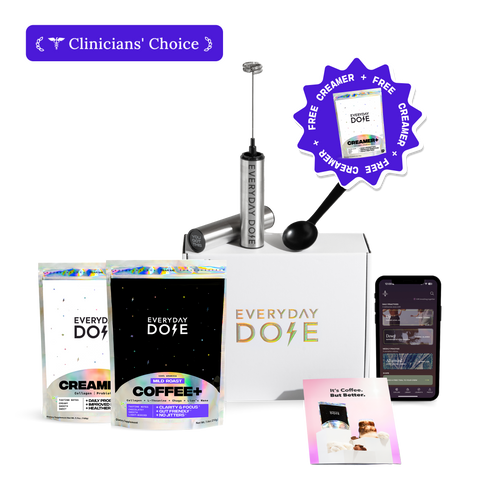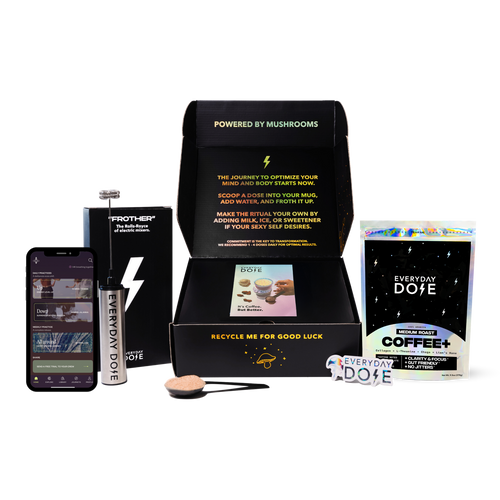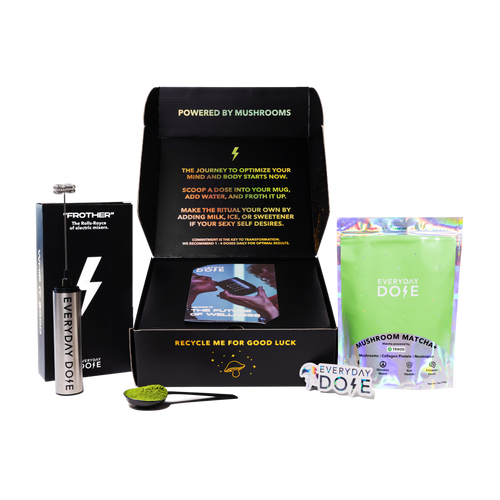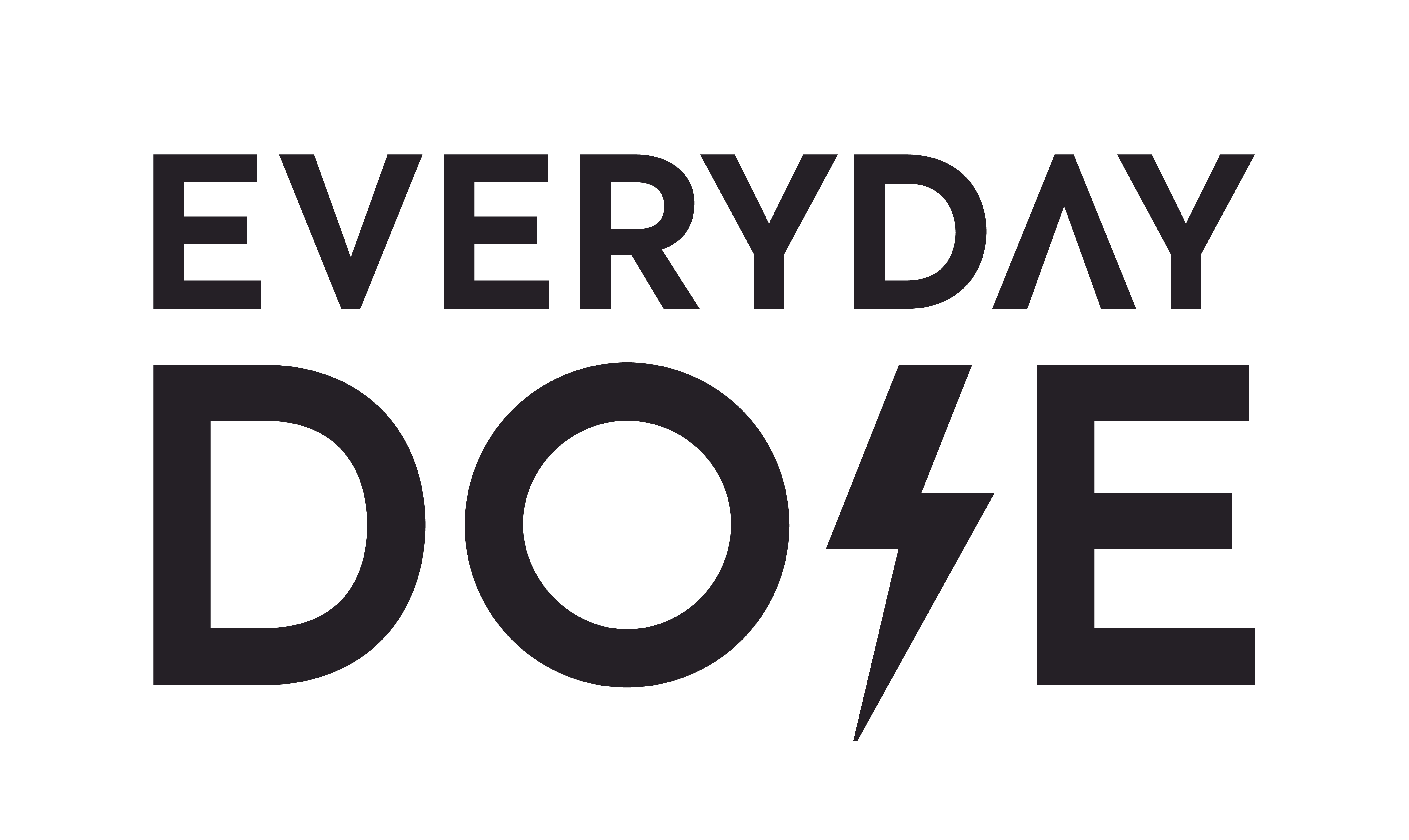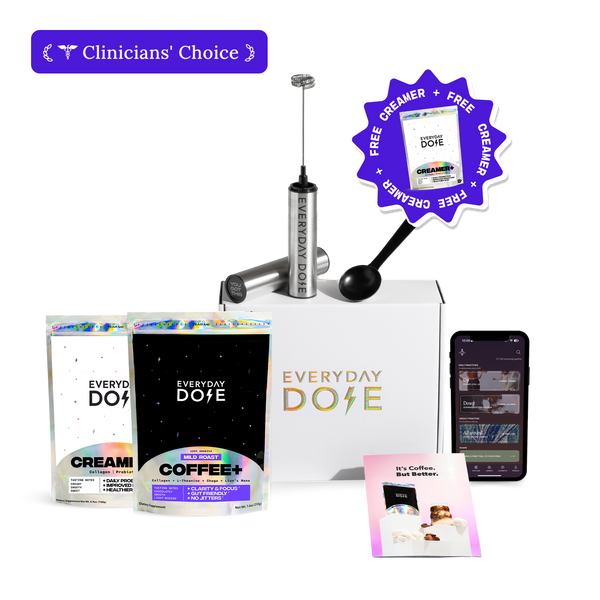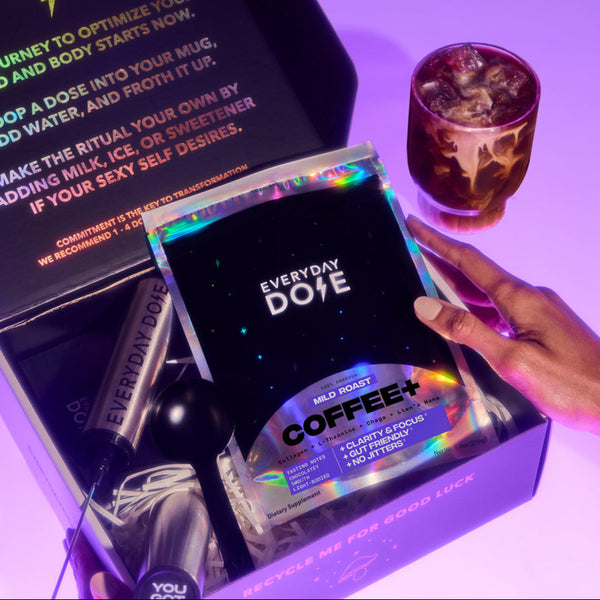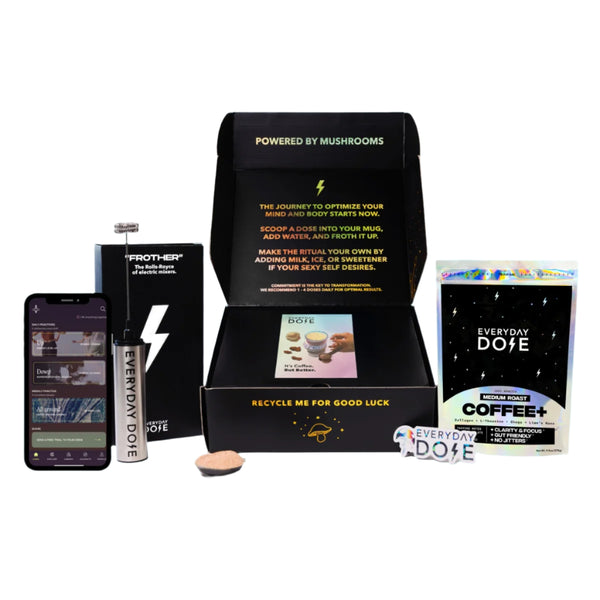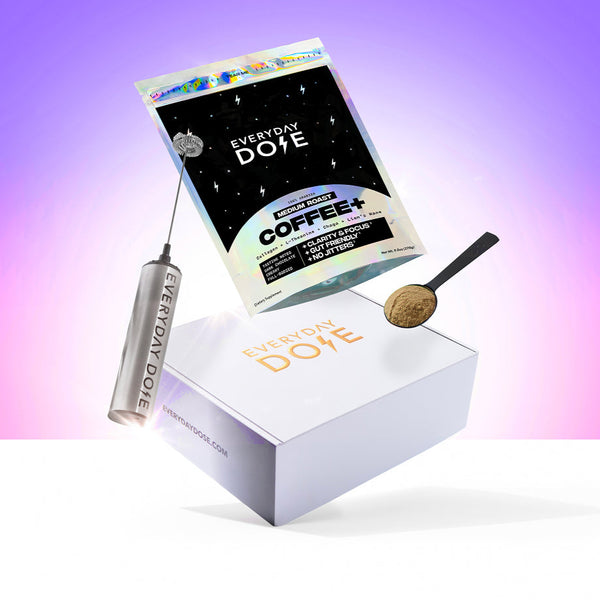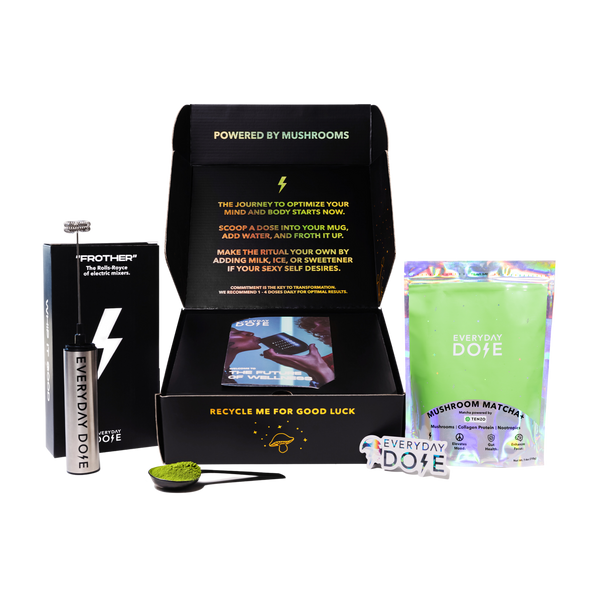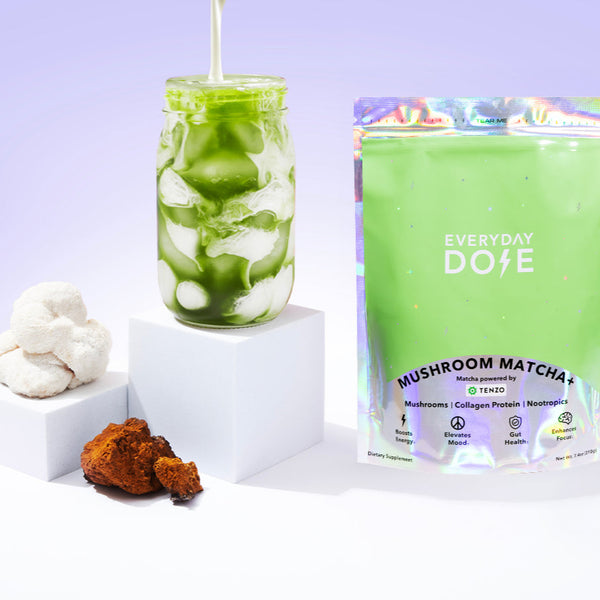Best Coffee for Beginners: A Complete Guide

No matter what your reasons are for getting into coffee, it’s easy to feel a little out of the loop when you’re hit with terms like “double-shot,” “cappuccino,” and “steamed.” Placing a coffee order might feel intimidating at first — many shops have multiple chalkboards of menu items, and there are endless ways to customize each drink.
Beyond that, you have things like tasting notes, roast levels, and single-origin coffee beans that can all affect the final flavor of your cup. If you’re already feeling lost, don’t worry. In this article, we’ll break down the basic coffee drinks, customization options, and coffee benefits.
Why Get Into Coffee?
Let’s be honest — most of us started drinking coffee because of the caffeine. Caffeine blocks adenosine (your brain’s “sleepy” transmitter), helping you feel more awake and focused. It can even support physical performance and metabolic rate.
However, too much caffeine can cause jitters, anxiety, disrupted sleep, and heart palpitations. Experts recommend no more than 400 mg per day for healthy adults, but the reality is that your tolerance is uniquely yours. Caffeine metabolism is determined by genetics, so while that 400 mg limit might work for some people, it’s important to find your own limits and stick by them — even if your limit is just one cup of coffee.
But there’s more to coffee than caffeine. It’s also loaded with antioxidants, especially polyphenols like chlorogenic acid, which may help encourage full-body health, support heart health, and even bolster your brainpower.
Plus, if you drink our Mushroom Coffee+, you can also experience benefits like sharp focus, good sleep, relaxed mental health, easy digestion, glowing skin, and quick memory. This is all thanks to star ingredients L-theanine, lion’s mane mushroom, chaga mushroom, collagen protein, and coffee extract. And that’s it — five ingredients are all we need to change your world.
What To Know About Coffee as a Beginner
If you’re starting to feel like ordering coffee is like speaking a foreign language, we’ve got your back. First, let’s go over the bean basics. Coffee comes from two main types of beans: Arabica (which is smooth, slightly sweet, and lower in caffeine) and Robusta (which is bitter, earthy, and contains more caffeine). Most coffee you drink will be made from Arabica beans.
Next, you should know about roast levels. Light roasts have fruity, floral notes and higher acidity. They also tend to be higher in caffeine. Medium roasts are balanced and slightly sweet, while dark roasts are bold, bitter, and smoky.
Another thing to think about is the origin of the beans. Single origin means all the beans come from one place, which is perfect for tasting regional flavor quirks. On the other hand, blends mix beans from different areas for a more consistent flavor profile.
Basic Coffee Drinks and How To Order Them
All of that information is great, but it still doesn’t help you when you’re faced with random Italian phrases on a menu. You don’t have to learn a foreign language, though — we’ll break down the most common coffee drinks, what they’re made from, and how to order them.
Drip Coffee
This is your standard cup of joe. Hot water slowly pours over ground coffee (usually via a machine or pour-over setup), and gravity does the rest. It’s smooth, easy to customize, and a great starting point for anyone who wants to enjoy the flavor notes of a particular roast. Order it black, or dress it up with cream, sugar, or oat milk if you're feeling fancy.
Espresso
Espresso is a concentrated coffee shot brewed under pressure in about 25 to 30 seconds. You can expect 60 to 75 mg of caffeine in just one ounce. Despite its small size, it still packs a ton of flavor and power. Sip it straight for bold taste, or enjoy espresso as an ingredient in one of the many espresso-based beverages on the coffee menu.
Blended Espresso
These are similar to milkshakes, but they feature the signature flavor of coffee. They’re made by blending espresso with ice, milk, and sweeteners or syrups. These are dessert-level indulgent, often served with whipped cream on top.
Caffeine levels vary depending on how many espresso shots go in, but you can always ask for less if you’re caffeine-sensitive. They’re the perfect way to ease into coffee if you don’t really like the flavor of coffee.
Americano
If you’re feeling espresso-curious but not ready to commit, try an Americano. It’s a shot (or two) of espresso diluted with hot water, resulting in something similar to drip coffee, but with a richer flavor and more crema on top. It’s also less acidic than regular brewed coffee. Ask for one “with room” if you want to add cream.
Latte
The latte is a crowd-pleaser made from espresso, steamed milk, and a light layer of foam. It’s creamy and extremely customizable — just ask your local coffee shop for their latte specials, and you’ll see what we mean.
With just a couple shots of espresso (unless you ask for more), it’s great for those who are just getting used to caffeine. Order it hot or iced, and don’t forget to snap a pic of the foam art for the ’gram.
Cappuccino
A cappuccino is a classic made with equal parts espresso, steamed milk, and milk foam, creating a thick, creamy texture with a strong coffee flavor underneath. The foam layer is thicker than the one you’ll find in a latte, which gives the cappuccino its signature airy top.
Order it hot for that cloud-like texture, or iced for a summer-friendly version. If you want it less intense, ask for a “wet cappuccino” (more milk) or if you’re all about foam, go “dry” or “bone dry” (less milk, more froth).
Breve
This rich drink swaps regular milk for steamed half-and-half, giving it a creamy, velvety body and slightly sweet flavor without adding syrup. A breve is made with espresso and can be ordered just like a latte — hot or iced, with a flavor shot or plain. They’re heavier (and higher in fat) than milk-based drinks, so you might want to save them for when you’re feeling fancy or need a treat-yourself moment.
Dirty Chai
A dirty chai is what happens when chai tea (a traditional Indian drink made from black tea, spices, and steamed milk) gets a deliciously bold espresso shot tossed in. It’s full of warmth from cinnamon, cardamom, ginger, and clove, and contains a caffeine boost from both the tea and espresso.
You can order it hot or iced, with one or two espresso shots. It pairs beautifully with oat or almond milk for extra spice-forward flavor.
Turn Up the Flavor
If plain coffee isn’t your jam (yet), try leveling up with these popular flavors:
- Vanilla: Classic, sweet, and crowd-pleasing.
- Caramel: Buttery and rich.
- Hazelnut: Nutty and warm, perfect with medium or dark roasts.
- Mocha (Chocolate): Turns any coffee into an instant dessert.
- Cinnamon: You can sprinkle it on top or mix it in syrup form.
- Pumpkin Spice: Clove, nutmeg, and nostalgia are the taste of fall.
- Peppermint: Fresh and festive, especially in the winter months.
- Toffee Nut: Sweet, buttery, and slightly nutty.
- Brown Sugar: This flavor pairs well with oat milk
What Milk Options Are Available?
Not all milk is created equal, and your choice of milk can totally change the taste and texture of your coffee drink. Here are some of the most popular options you might find:
- Whole Milk: Creamy and sweet, this is the standard in most cafés.
- 2% / Skim Milk: This is lighter, but still foamy.
- Half and Half : It’s used in breves for extra creaminess.
- Almond Milk: Nutty and slightly sweet, this doesn’t froth well, but it tastes great iced.
- Oat Milk: This is a barista favorite because it’s creamy, neutral, and froths beautifully.
- Soy Milk: It provides a subtle flavor and decent froth.
- Coconut Milk: More watery, this offers a tropical twist that works best in cold drinks.
- Macadamia / Cashew Milk: These options are niche but add a unique flavor and smoothness to your drink.
What Are the Size Options?
Sizes may vary by coffee shop, but the standard three in the U.S. are small (8 oz), medium (12 oz), and large (16 to 20 oz). A small often contains just one shot of espresso, while mediums and larges typically contain two or more.
Some shops swap these for fun names like tall, grande, and venti, which can be confusing at first. If you’re unsure, just ask how many espresso shots are in each size.
The Bottom Line
Whether you’re a first-time coffee drinker or just trying to find your perfect sip, the world of coffee has so much to explore. From foamy cappuccinos to dessert-worthy breves, there’s truly something for everyone.
You don’t need to know every roast or bean origin to enjoy a great cup — just follow your taste buds and don’t be afraid to experiment. For more tips on how to enjoy the best coffee, visit the Everyday Dose blog.
Sources:
Is caffeine a friend or foe? | American Heart Association
Caffeine content for coffee, tea, soda and more | Mayo Clinic
Dietary fat is good? Dietary fat is bad? Coming to consensus | Harvard
More Than a Tea Habit: The History of Chai in India | The Journal of Contemporary Asian Studies
Start your day
The Right Way
